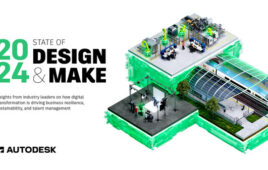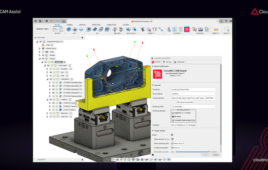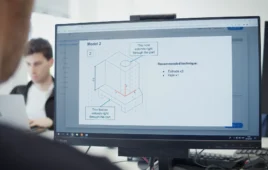Here’s an interesting term: Design agility.
PTC defines it, generally, as “the power to make late-stage design changes quickly and easily .”
They define it more specifically as “the ability to rapidly recognize features and patterns in imported models, enabling seamless modifications; design intelligence for dumb models.”
You might expect that more specific definition from PTC, being that they have software that fits it rather exactly.
Still, I have to give PTC credit: This is a company that was willing to reinvent (and rebrand) its main product line, specifically to enable design agility. Their Creo Parametric software supports a rather interesting form of direct editing (they call it flexible modeling.) It’s quite a good tool when you need to make late-stage design changes.
PTC just sent me an interesting infographic that reports the results of a study they did on design agility. It’s kind of big, so here is a little image of it. If you click on it, you can download a PDF version that’s actually possible to read.
Here’s my summary of the infographic:
- Projects usually have a lot of unexpected changes, often in late stages.
- It’s difficult to use CAD models from other systems, or created by other people.
How do you get “design agility?” PTC is happy to tell you their answer, at www.ptc.com/go/agility. As for my answer: It’s complicated. I will tell you what I think a good first step would be:
Use tools that can take advantage of the knowledge and data that you have.
If that’s too obscure, let me put it in the context of CAD:
- It’s important that your CAD software is able to open and edit the data you have, no matter the source of that data. If you’re fortunate enough to be in a situation where everyone associated with a project is using exactly the same suite of software, of the same version, then you probably don’t need to sweat this too much. But for those of us who live in the real world—where people use a lot of different tools, and interoperability is still a challenge—it can be a big deal.
- It’s important that you are able to meaningfully edit the CAD data you have, even if you don’t know how it was constructed. To put a finer point on it: what you know is what it looks like, and what you want it to look like; what you often don’t know is how it is structured (e.g., the hidden relationships built into the feature tree.) It’s important that you CAD software allow you to edit the that data, without you needing to take the time to discover and make sense out of its structure.
Filed Under: 3D CAD World




